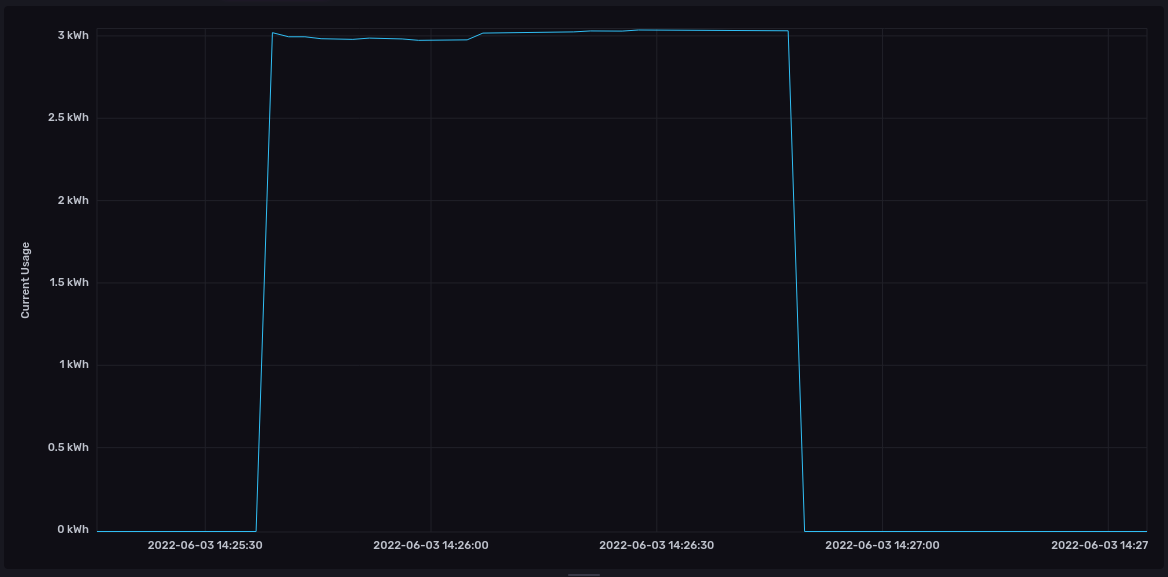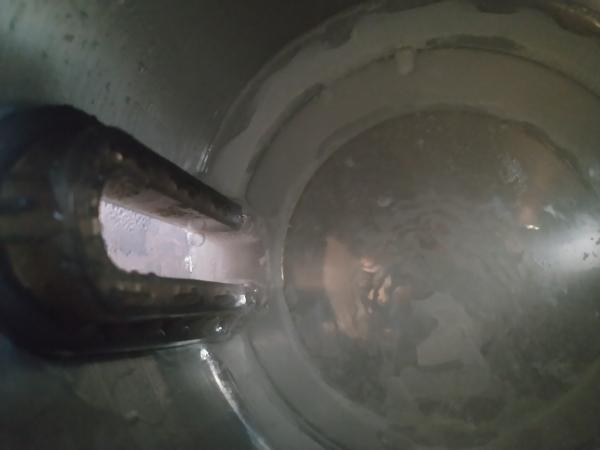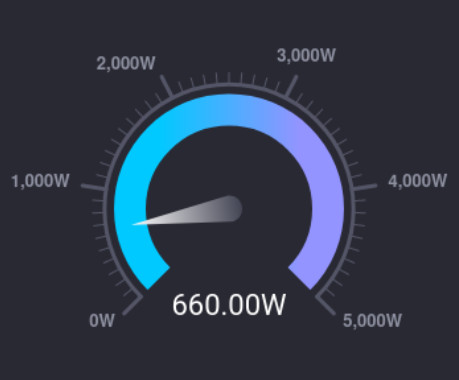How much more efficient is refilling a kettle than reboiling it?
Like many on this here Sceptred Isle, I use my kettle regularly throughout the day.
I live in a hard water area, and the prevailing wisdom is that you should refill rather than reboil your kettle in order to reduce the rate that limescale builds up at (and by extension reduce energy usage).
The logic is that during the first boil, the denser minerals move to the bottom of the kettle, so after you've made your cuppa, the adulterants in the water left in the kettle are much more concentrated, leading to an increased rate of scaling in each subsequent boil (and, it's been suggested, possible increased health risks).
From an energy use perspective, this is an issue: Limescale adds mass to the inside of the kettle, so over time more energy is required in order to boil the same volume of water (though, strictly speaking, if you're using the gauge on your kettle you'd actually be boiling a smaller volume water because the limescale will have displaced some measure of it) because you're having to heat the limescale layer too.
Emptying and refilling reduces the rate of build-up, but, if the kettle is used even semi-regularly it comes at a cost: the residual warmth of the remaining water is lost and the new water has to be brought to boil from (tap) cold instead.
It's the cost of that temperature gap that I was interested in: I wanted to see how big a difference refilling made in energy usage (both per boil and over time).
Over the course of a few days, I stuck to my usual routine (best summarised as: want tea, make tea) but used different approaches to kettle filling to see what the effect on energy consumption was.
Method
The method was fairly simple: I plugged my kettle (a Duronic EK42) into a TP-Link Tapo P110 smart socket and then made tea (for science!).
Emptying & refilling happened just before the kettle was switched on, so the kettle will have been sat with warm water in it since the last boil (meaning there may have been be a small amount of residual heat in the body). The existing water is poured away, and the kettle filled up to 500ml with fresh water.
From a limescale prevention perspective, this approach is actually a little inefficient as it extends the time that the concentrated solution is in contact with the kettle (giving more opportunity for deposits to build), but I tend towards grabbing my tea and running back to whatever I was doing.
The smart-socket was polled once a minute for it's usage (using the method described here) aand it's responses were written into InfluxDB for later querying with Flux.
Sampling Interval and Metrics
Because a kettle boils relatively quickly, a one-minute interval isn't really short enough to watch how peak usage grows.
However, as well as current consumption, the plug reports the total kWh consumed so far that day, which can be used to see how much electricity a given boil consumed.
I could have increased the sampling frequency, but I didn't want to because I was using my existing power monitoring setup.
However in order make sure this approach didn't miss anything, I have since run a dedicated probe with a 1 second poll frequency to see how the kettle consumes power and it's fairly uninteresting:

This isn't overly suprising: a kettle only really consists of a heating element and a thermostatic switch - the element is either on or off. Unlike a dishwasher or washing machine there isn't really much of interest to be found in real-time draw rates.
External Factors
Ambient Temperature
Boiling water involves taking it from it's at-rest temperature up to 100c: if the weather's better one day then the resting temperature of the water will likely be slightly higher. This reduced temperature gap means that less energy will be required to bring the water to the boil.
However, the difference between ambient temperature on each day was fairly marginal

I did consider putting a probe in the kettle so that I could graph out temperature ranges, but my only long electronic temperature probe has a rubber coating and I didn't want to risk ruining the kettle.
Water Volume
The higher the volume of water, the more energy is needed to boil it.
In an ideal world, measurements would be exact so that we could be sure the same volume of water was going into the kettle, but
- That wouldn't reflect real-life usage
- I was measuring this during a standard day: I don't have time to be measuring to exacting standards
When I refilled the kettle, it was to the minimum line (still more water than actually needed) which claims to be 500ml.
Kettle Scaling
Whether you refill or reboil, the kettle will always pick up a little bit of limescale.
At the start of this, my kettle had a small amount of limescale build-up

To control for this, I added a day to the end where the kettle had been freshly de-scaled in order to judge what difference (if any) it might have made.
Results
Day 1: Refills
On day 1 I followed my standard approach - empty and refill the kettle with 500ml (the minimum) every time.
This Flux query shows the amount of power consumed per boil (rather than peak draw)
from(bucket: "Systemstats/autogen")
|> range(start: v.timeRangeStart, stop: v.timeRangeStop)
|> filter(fn: (r) => r._measurement == "power_watts")
|> filter(fn: (r) => r.host == "kettle")
|> filter(fn: (r) => r._field == "watts_today")
|> map(fn: (r) => ({ r with _value: float(v: r._value) / 1000.0 }))
|> difference(nonNegative: true)
Giving the following graph

The kettle was boiled 7 times, giving the following stats
- Min:
0.03 kWh - Mean consumption:
0.0409 kWh - Max:
0.0489 kWh
Day 2: Reboil
There were 9 boils, but the first needs to be discounted (first drink of the day, I wasn't properly awake and refilled 500ml out of habit).
I filled the kettle with 1 litre of water and reboiled until it needed refilling (around lunchtime) with another litre

Aggregate usage (excluding that first boil) were
- Min:
0.03 kWh - Mean:
0.0375 kWh - Max:
0.053 kWh
Day 3: Refill
Day 3 was a day of refills, with a descaling process in the evening.
There were 6 standard boils, and then two for the deliming.

Per boil usage (excluding the descaling run) was
- Mean:
0.0379 kWh - Min:
0.03 kWh - Max:
0.050 kWh
The deliming process is pretty simple - pour 1 litre of white vinegar in and boil. A few hours later, empty out, rinse well, boil and discard 1L of water (to help flush out the taste of vinegar).
The 1 minute sampling rate led to an interesting artifact in the graph during the vinegar boil - because it crossed a sampling threshold we ended up with two peaks

Usage for the descaling was:
- Peak 1:
0.0419 kWh - Peak 2:
0.5200 kWh - Peak 3 (rinse boil):
0.0500 kWh
Giving a total usage of 0.6119 kWh for the descaling process.
Day 4: Refill (de-scaled)
Day 4 was another day of refills, but this time with a nicely de-scaled kettle. There were slightly fewer boils this time as I didn't have any hot drinks at home in the afternoon.

Usage was
- Mean:
0.039 kWh - Max:
0.052 kWh - Min:
0.03 kWh
Tabulated Data
If we tabulate those stats
cols = ["Day", "Min", "Mean", "Max"]
rows = [
{"Day" : 1, "Min": 0.03, "Mean": 0.0409, "Max": 0.489},
{"Day" : 2, "Min": 0.03, "Mean": 0.0375, "Max": 0.053},
{"Day" : 3, "Min": 0.03, "Mean": 0.0379, "Max": 0.050},
{"Day" : 4, "Min": 0.03, "Mean": 0.039, "Max": 0.052}
]
print(make_table(cols,rows))
We get
| Day | Min | Mean | Max |
|-----------------------------|
| 1 | 0.03 | 0.0409 | 0.489 |
| 2 | 0.03 | 0.0375 | 0.053 |
| 3 | 0.03 | 0.0379 | 0.05 |
| 4 | 0.03 | 0.039 | 0.052 |
-------------------------------
Comparison
The numbers are much closer together than I expected them to be
- The average per-boil usage across refill days was
0.0391 kWh/boil:0.00163 kWh(4.1%) more than reboiling - Day 1 was slightly higher but the difference is still just
0.0034 kWh(8.3%)
A descaling run with white vinegar used 0.6119 kWh in power (including the rinse boil at the end).
Reboiling increases the rate of scaling, so whilst descaling will always eventually be necessary, it's needed more regularly by a kettle that's reboiled.
So, at what point does the energy demand of that overtake the increased per-boil usage of refilling the kettle?
- At
0.0034 kWhextra per boil refilling needs to allow (0.6119/0.0034) 179.97 more boils before de-liming is necessary - If we take the more conservative
0.00163 kWhextra per boil, it's 375.39 boils
Not including the de-liming run, I averaged 6.75 boils/day so the number of extra boils required represent about 27 and 55 days of usage respectively.
The variation between refill and de-limescaled refill is small enough to be considered incosequential: my kettle was only very lightly scaled and in normal usage probably wouldn't have been de-scaled for at least a few more months. Heavier scaling would obviously give different results.
Usage Pattern Dependent
There is an additional factor here.
My reboil usage averaged lower because I used the kettle quite regularly throught the day, so there's residual heat in subsequent boils.
Had I only made a few cups of tea, hours apart, the energy usage involved in each of those reboils would almost certainly be much higher. An office worker, therefore, might see much higher consumption for reboils as they're more likely to fill the kettle, boil it once in the morning and then not reboil until they return home in the evening.
Water Cost
Refilling the kettle involves pouring a volume of water away rather than consuming it, so any household with a water meter would need to factor the cost of that in too.
My local water authority currently charges the following per cubic metre (1m3 is 1000 litres)
- Water supplied:
£1.6853 - Sewerage (assumed to be 90% of supplied water volume):
£1.71
The minimum fill on my kettle is 500ml (half a litre) and around half of that is poured away (when I'm not using a big mug), so we can calculate the water cost of the wasteage as
Supply: (1.6853 / 1000)L * 0.25 = £0.000421325
Sewerage: (1.71 / 1000)L * (0.25*0.9) = £0.00038475
So, refilling incurs an additional water cost of around £0.000806075 per boil.
Costing
Energy costs are incredibly volatile at the moment, so any numbers given here will likely be wrong in short order, but to be able to factor in the additional water cost we need to convert our power usage to a common unit and currency is the easiest.
EDF currently charge 29.24 pence per kWh, so we can calculate costs as follows
| Day | Mean kWh | Energy Cost | Wasted Water Cost | Total |
|-----------------------------------------------------------------|
| 1 | 0.0409 | 1.195916 | 0.0806075 | 1.2765 |
| 2 | 0.0375 | 1.0965 | 0 | 1.0965 |
| 3 | 0.0379 | 1.108196 | 0.0806075 | 1.1888 |
| 4 | 0.039 | 1.14036 | 0.0806075 | 1.221 |
| De-scale | 0.6119 | 17.891956 | 1.6853 | 19.5772 |
-------------------------------------------------------------------
Refilling the kettle averages around 1.2288p per boil, whilst reboiling averages 1.0965 pence (0.1323p/11% cheaper).
De-scaling the kettle requires 2 boils and pouring a litre of water away (the rinse boil at the end), driving the cost of that activity up to 19.5772p (before the cost of the descaling agent is considered).
It's worth noting here, that the cost of descaling depends entirely on the method used: commercial chemical products often require two loads of water which increases the water costs further.
Conclusion
As expected, emptying and refilling the kettle does consume more power per boil than reboiling does, because the new water is colder than the previously boiled water you're pouring away, giving a larger temperature gap which needs to be filled with energy.
However, a kettle that's regularly reboiled also needs descaling more regularly and the energy cost of the descaling process can quite easily surpass that incurred by refilling the kettle.
As a result, a refilled kettle only needs to achieve as little as 375 extra boils for the energy cost to break even. At an average of 6.75 boils/day thats less than two months of usage.
The numbers shift a little once you start to factor in the cost of water wasted when refilling, making a refilled boil 0.1323 pence more expensive on average.
However, the energy+water cost of descaling is comparatively high (at 19.5772p) so the numbers shift further in favour of refilling: a refilled kettle need only extend the period between descales by 148 boils (22 days) to be able to break even.
The longer the time between them, the higher the cost of reboils gets, so the argument against reboiling is even stronger for a kettle that isn't used regularly throughout the day.
Even with regular use, reboiling doesn't make sense from an energy usage perspective: depending on usage pattern, it can deliver a slightly reduced cost per boil, but increases maintenance (de-scaling) costs. The idea that reboiling is cheaper is supported only if you focus on per-boil cost to the exclusion of all else.

